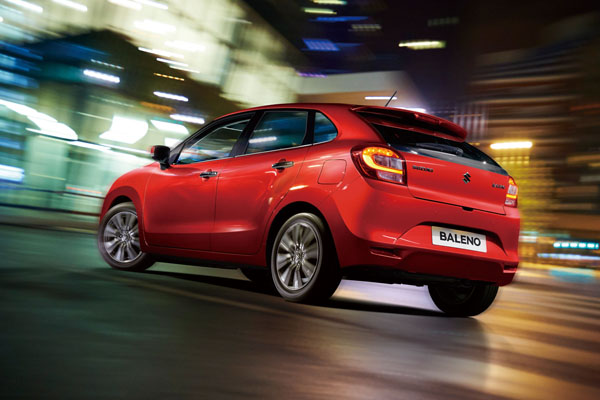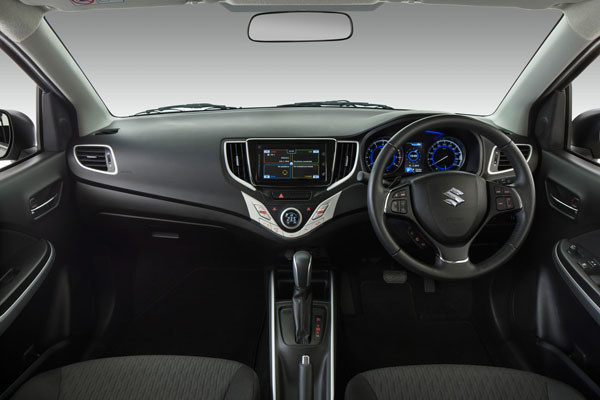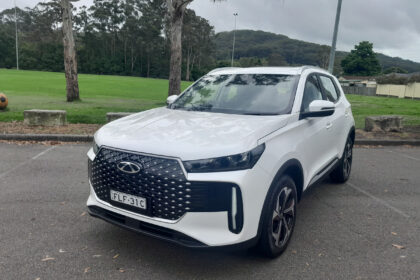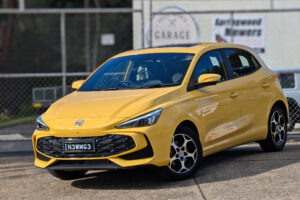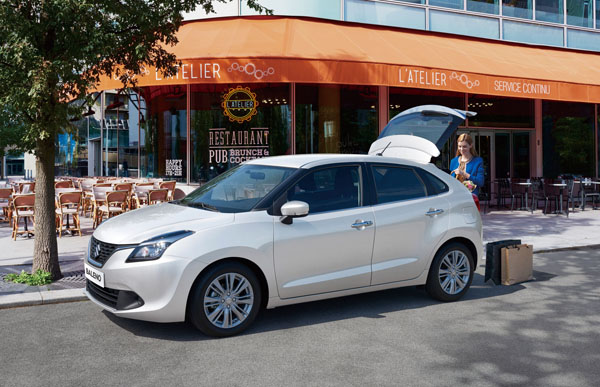
Suzuki must be doing something right: there’s close to a two-year wait for buyers of the latest Jimny, the ‘mighty mouse’ 4×4; Swift sales are ticking over, albeit in low gear; and the Baleno in November sold 415 cars, up nearly 83 per cent, behind only Toyota Yaris (889) and Kia Rio (438).
In 2017, Suzuki injected performance and lower fuel consumption into the Baleno with a 1.0-litre three-cylinder turbocharged petrol engine. However, all this came at a price – $22,990, plus on-road costs, to be exact – with buyers being scared off.
Now, two years later, the range-topper has been shown the door to be replaced by a GLX powered by a 1.4-litre naturally aspirated engine delivering 68 kW at 6000 rpm and 130 Nm at 4200 rpm as opposed to 82 kW (5500 rpm) and 160 Nm (1500-4000 rpm) of the turbo.
This brings the lineup down to the Baleno GL 1.4 hatch manual / automatic at $15,990, plus on-road costs, and Baleno GLX 1.4 hatch automatic $!8,990. The test car was the GLX auto.
STYLING
While Suzuki tries to put a spin on the Baleno with its ‘Liquid Flow’ design concept, looks are straight out of the hatchback playbook – low, wide stance with curves all round.
It’s left to the ‘two-storey’ black radiator grille with chrome highlight surrounds and wide-set lighting set-up, plus rear roof spoiler and twin-spoke 16-inch alloy wheels to add its own sporty identity.
The rear is plain and simple – neat and tidy without any pretension to be a hot hatch.
INTERIOR
Cabin width was improved previously by reducing door liner intrusion into the front seats, pushing the seats further apart to give more shoulder room for the driver and front seat passenger.
Storage is versatile, with a deep centre console box doubling as an arm rest, while further forward is a tray with removable partition. Both front and rear door pockets include bottle holders.
Also front and rear are accessory sockets, complemented up front with a USB port. Quality fabrics cover seats offering comfort on long and short drives while imbuing the surroundings with a calm atmosphere.
INFOTAINMENT
In addition to traditional display information such as speed and engine revs, trip meters, distance to empty, average speed and warnings, GLX drivers can tailor the dashboard display to any one of six set-ups.
Personalisation of graphics monitoring systems include engine power and torque outputs; real-time driving and tracked G-forces; accelerator and brake efficiencies; and average speed and fuel consumption.
A central display screen also links to Apple CarPlay, Android Auto and MirrorLink smart phone interfaces which include music, maps, messages, current track information, audio books and podcasts, as well as navigation and rear camera viewing.
ENGINES / TRANSMISSIONS
With the turbo motor no longer in the mix, the Baleno is powered by a 1.4-litre naturally aspirated engine delivering 68 kW at 6000 rpm and 130 Nm at 4200 rpm, mated with a four-speed automatic transmission.
SAFETY
An electronic stability program takes control of engine and brakes should the wheels lose traction.
In an emergency braking situation anti-locking brakes keeps the car from skidding, while brake assist adds to stopping power and brake force distribution sends the optimum amount of force to the front and rear wheels.
Pedestrians are protected in an accident by the Baleno’s bonnet, cowl top, wipers and front bumper designed to absorb impacts.
DRIVING
The powertrain leave the Baleno GLX lacking a little in response to accelerator pedal input.
I suppose it’s down to a compromise between performance and fuel economy, the latter taking the prize on the test vehicle with 7.8 litres per 100 kilometres in the suburbs and 4.6 litres per 100 kilometres on the open road.
On the other hand, steering was responsive, if a little over enthusiastic, giving the car a tendency to wander at some speeds. Keeping the mind on the job made it manageable.
Other than that, a new light and rigid platform and highly tuned suspension gave the Baleno occupants a comfortable ride, with assured handling and enhanced safety features springing no surprises no matter what the road conditions.
A dash-mounted touch screen gives access to radio, phone, navigation and messages, while an advanced multi-information display includes a 4.2-inch colour LCD screen situated between speedo and tacho keeps the driver in touch with fuel efficiency, engine power and torque, average vehicle speed and driving time and distance, plus range to empty.
It also indicates how close objects are to the vehicle when the rear parking sensor is in operation.
Underneath on the centre stack is the easy-to-reach auto air-conditioning controls, as are cruise control buttons situated on the three-spoke steering wheel.
SUMMING UP
In a strong stable of Suzuki stars – Jimny, Swift and Vitara – the Baleno is strictly a supporting act and faces an uphill battle against a host of rivals in one of the most competitive market segments.
AT A GLANCE
MODEL RANGE
Suzuki Baleno GL 1.4 hatch manual / automatic $15,990
Suzuki Baleno GLX 1.4 hatch automatic $18,990
Note: These prices do not include government or dealer delivery charges. Contact your local Suzuki dealer for drive-away prices.
SPECIFICATIONS (Suzuki Baleno GXL 1.4-litre 4cyl petrol engine, front-wheel drive, 5dr hatchback)
ENGINE:
Capacity: 1.373 litres
Configuration: Four cylinders, in line
Maximum Power: 68 kW @ 6000 rpm
Maximum Torque: 130 Nm @ 4200 rpm
Fuel Type: Petrol 91 RON
DRIVELINE: Four-speed automatic, front-wheel drive
DIMENSIONS, WEIGHT AND CAPACITIES:
Length: 3995 mm
Wheelbase: 2520 mm
Width: 1745 mm
Height: 1470 mm
Turning Circle: 9.8 m
Kerb Mass: 915 kg
Fuel Tank Capacity: 37 litres
BRAKES:
Front: Ventilated disc
Rear: Disc
STANDARD WARRANTY:
Five years / unlimited kilometres




